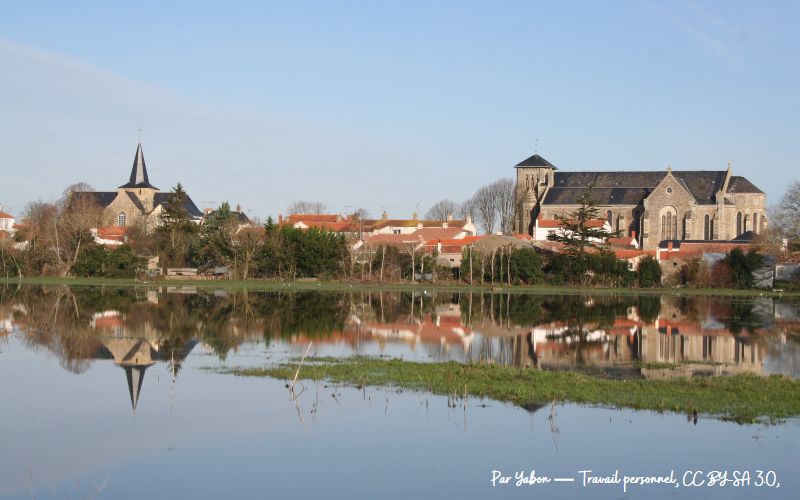Villages in Vendée and surrounding areas
Pornic
Nantes
Sallertaine
Apremont
Challans
This village has over 300 shops. The town hosts several weekly markets, with the Tuesday market being renowned as the most important in the northwest of Vendée.
The municipality is famous for its poultry farming, including the famous “Challans duck” served at “La Tour d’Argent” (a Parisian gourmet restaurant) and the black chicken of Challans.
The Minées fair is one of the largest commercial fairs in Vendée, dating back to the Middle Ages. Nowadays, it takes place once a year at the beginning of September.
Challans is a popular stopover for many vacationers heading to the beaches of the Vendée. In addition to the many quality shops, to attract tourism to the city, the municipality created a fair called “La foire des quatre jeudis” in 1987, aiming to reproduce the atmosphere of the old fairs of the city at the beginning of the 20th century with its local folklore.
Sallertaine
Sallertaine is a charming village located in the western region of France, renowned for its rich cultural heritage and picturesque landscapes. The village is home to a beautiful 12th-century church, which is a stunning example of Romanesque architecture. The church is one of the oldest buildings in the village and attracts visitors from all over the world.
Another must-see attraction in Sallertaine is the windmill, which dates back to 1560 and is still operational today. Visitors can climb to the top of the windmill and enjoy panoramic views of the surrounding countryside.
Sallertaine is also known as the village of artisans and craftsmen, with many traditional industries still thriving in the area. Visitors can watch skilled craftsmen at work in local tanneries, potteries, and jewelry-making workshops.
For those who love outdoor activities, canoe and boat hire is available in Sallertaine, making it the perfect way to explore the area’s many old salt marches. These salt marches have played an essential role in the local economy for centuries and are a fascinating sight to behold.
Bois de Cené
The commune is composed of different environments, the Marais with the Vendéen Breton Marsh in the west of the commune and a bocage countryside in the east. Bois-de-Céné was on the edge of the ocean 1000 years ago. Monks established the Abbey of Île-Chauvet there, which you can go and discover, as well as an observatory to admire storks and their nests..

Bouin
This town is located in the heart of the Marais breton vendéen. Saliculture has long been the main activity of Bouin (the town that produces the most salt in the entire Marais vendéen and the Bay of Brittany, as it was called at the time. Today, oyster farming (180 small busineses, Vendée Atlantique oysters) and aquaculture have become the main activities of the former salt marsh.
In 2003, eight wind turbines were built on the Bouin polders. These turbines were among the first to be installed in France. Since then, they have become real attractions, bringing tourists to the dike, the marsh, and Port-du-Bec. They are capable of providing electricity to 20,000 households.
Apremont
This town is crossed by the coastal river “la Vie”, which forms a reservoir lake upstream of a dam located in the town.
Apremont has one of the first Renaissance castles in Vendée, built between 1534 and 1542 on the very site where a medieval fortress once stood. Today, some parts of the ramparts, an entrance gatehouse that still bears traces of a drawbridge, and an ice cellar that was used to preserve food, remains.
Nantes (department of Loire-Atlantique, only a 1-hour drive away)
As one of the largest cities in France, Nantes covers an area of 66 km2, or 6,600 hectares, including 1,100 hectares of green spaces and public gardens. In 2004, Time magazine named Nantes “the most pleasant city in Europe” for its green spaces and the many waterways that run through the city, such as the Erdre and its boat rides.
You can also visit Les Machines de l’île, an exhibition and entertainment space: the articulated elephant was inaugurated in June 2007. It is made of wood (carved) and steel and weighs 48.4 tonnes per trip. On board, visitors discover a magnificent panorama. They have a view of the mechanism, and every vibration of the elephant is felt.











